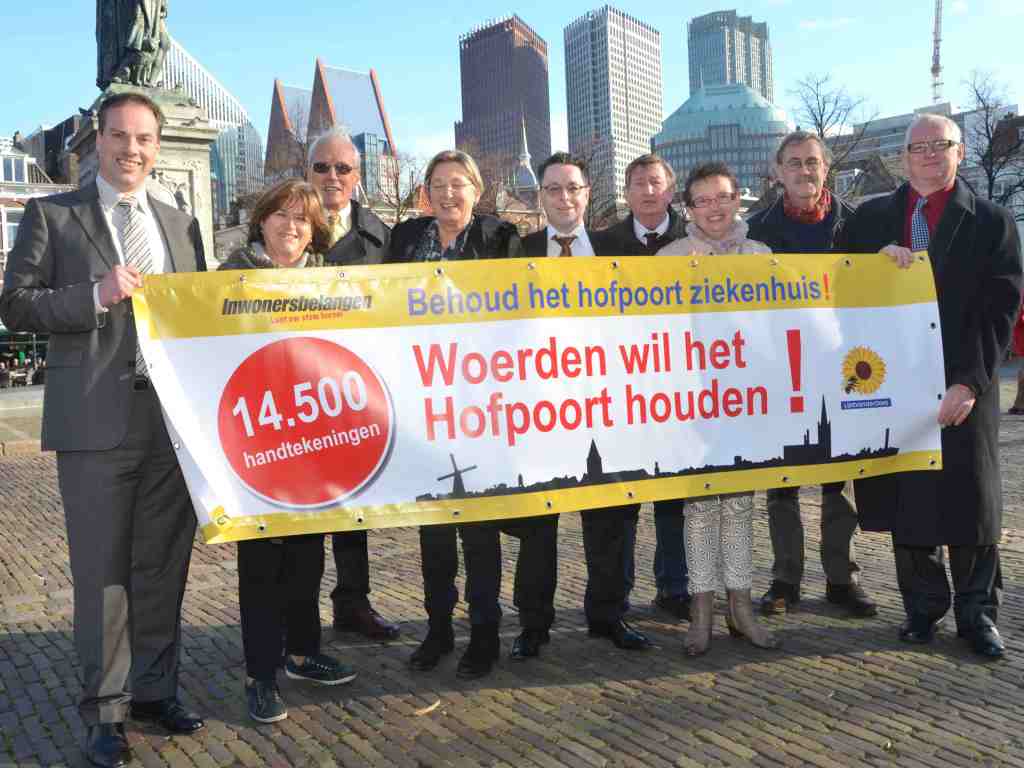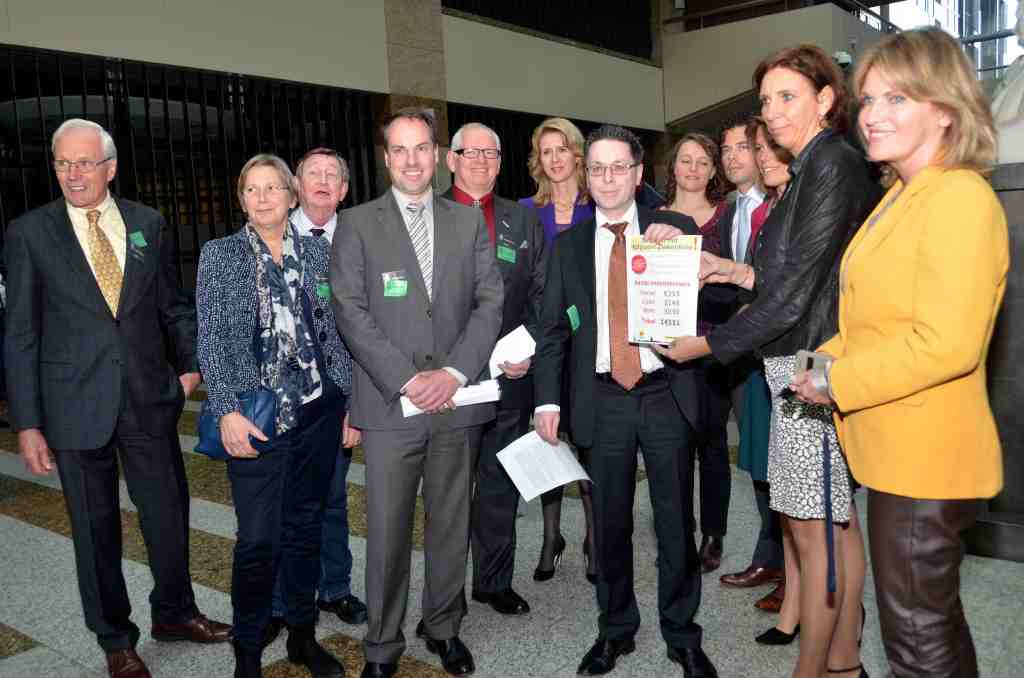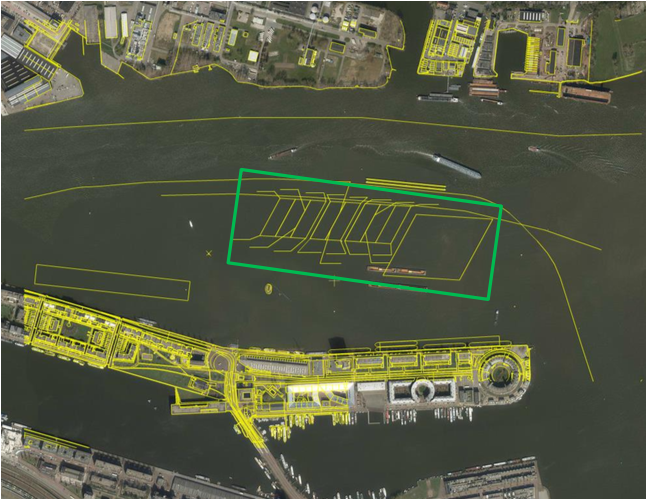Nieuws
A Ticket System for Government (Or: Let’s Finally Give the Ombudsman Teeth)
The ombudsman, as it stands, is a shark without teeth. It cannot even smell a scandal if it was bleeding before their eyes — can’t sense, can’t bite, can’t act, can’t fix. It’s a watchdog with no jaws. So let’s give it an upgrade or even better give the government such an upgrade that Ombudsman loses the necessity for their entire existence.
This isn’t some grand ideological revolution. It’s just a silly idea for a public ticket system. Silly, but powerful.
Imagine a civic ticket system — not buried in obscure forms, not locked in back-office email chains. Just like an internal help-desk, but for governance. Public, structured, traceable. And smart.
This is what it looks like.
Core Idea
Citizens should be able to report issues publicly — not buried in anonymous inboxes, not hidden behind “ongoing investigation” seals. People already talk about public issues. If people can talk about public issues with their friends, why can’t they track them together too?
A government ticket system could work just like internal systems in IT or customer service — but with a civic twist.
This is not a place for endless debate. It’s a structure to frame problem → proposal → response, cleanly and traceable.
This system proposes a transparent, iterative problem-solving interface where AI is used not to obscure, but to clarify.
The System: Public, AI-Structured, and Transparent
The system is made up of 4 stages — and yes, it uses AI — but only as a tool to help people sharpen what they’re already saying.
Every issue goes through this cycle:
1. Problem Description
a) Citizens submit an issue.
b) The AI cleans up the language, consolidates overlapping inputs, and upgrades the coherence of the report.
c) A public change-log shows the input that evolved the description — all steps visible, all input attributable.
2. Proposed Solution
a) Based on the refined problem description, the AI drafts a solution or possible action path.
b) This is visible to the public as a formal response — no magic, just structured reasoning.
c) This is not a decision. It’s a draft — structured logic, not authority. Only advice.
3. Critique Layer
a) Citizens respond to the proposed solution — a structured challenge to the proposal..
b) Their remarks are also structured by AI — not censored, but upgraded for clarity and grouped by theme or angle.
c) Again, change-logs and input trails are visible. No anonymous edits. No hidden manipulations.
d) in a sense this is the same as step 1 (problem description)
4. Upgraded Solution
a) The AI integrates valid critiques and proposes a refined version of the solution.
b) This is the “feedback-reinforced” stage, where the system attempts synthesis, not endless argument loops.
All stages remain visible — including abandoned tickets, failed resolutions, and ongoing ones. This creates a living public record of issues and proposed governance responses.
This is the synthesis. 1 = 2 + 3 = 4.
Why This Matters
- It forces clarity and traceability. No more vague complaints floating in chaos.
- It turns public input into a collaborative upgrade process.
- It shows which tickets are being handled, stalled, ignored — in plain sight.
- It makes every AI edit accountable, not mysterious.
- It doesn’t replace the ombudsman — it arms them.
Business Model? Sure — But Keep It Public
Yes, this is a product. But no, it shouldn’t be commercialized. This is civic infrastructure. It belongs to the commons.
It could be sold to municipalities, NGOs, or transparency coalitions — but that defeats the purpose.
Build it, release it, and let it run at zero cost. The public has already paid for enough systems that don’t work. This one should.
The value lies not in monetization — but in legitimacy.
Expanded Use: From Complaint Board to Administrative Operating System
What starts as a feedback tool can evolve into a complete civic engine. The system can scale:
- Reported Issue
- Processed Issue (by a public servant or automated filter)
- AI-generated remark on process adequacy (4-stages again)
- Re-open option if resolution was insufficient (4-stages again)
- Cross-department visibility and workflow mapping
- The ticket can go through different departments and the work of each department remains visible.
Each issue flows like a case file, but it’s public-facing and structurally transparent. Departments can adopt the system internally. Citizens and officials see the same state of the case. Updates are traceable.
With enough refinement, this system could even approach pre-judicial arbitration or replace lower-level administrative courts — especially for predictable, repeatable types of disputes (benefits, housing, permit denials, etc.).
At some point a judge and lawyer can then bend over the case after it went through these 3 steps.
Design Philosophy
- Public by default.
- AI-enhanced, not AI-obscured.
- Built around iteration, not resolution-hiding.
- Input is traceable. Reasoning is legible. Logic is public.
- Not built to silence citizens with forms — but to cohere chaos into clarity.
Potential Impact:
If deployed at scale, this would:
- Reduce performative complaint culture (“I ranted online!”) in favor of traceable input.
- Provide oversight journalists and watchdogs with live case data.
- Offer civil servants a way to separate noise from signal.
- Create longitudinal accountability: we’d know what failed, what improved, and why.
- We can track government efficiency through details such as backlog and amount of re-opened cases
Final Thought
Let’s stop treating public concern like noise.
Let’s give it a ticket.
Let’s give the ombudsman jaws.
Give people a way to speak clearly. Let the problems stay visible. Let the fixes be criticized. Let the system evolve in full view.
Democracy doesn’t die in darkness — it suffocates in forms. We’ve normalized arbitrary bureaucracy and opaque complaint systems. But the technology to upgrade them exists. All we’re missing is the will — and the will can be crowd-sourced.
Written by Artorius Magnus
https://tinyurl.com/laconic-utopia World-Peace suggestions @250 articles highschool dropout-autodidact (unofficially 5+ PhD's).
Overhandigd aan de wethouder
De petitie is overhandigd aan de wethouder.
Burgers en gemeente hebben geen inspraak bij ziekenhuiszorg
De petitie is aan de raden van bestuur van de ziekenhuizen aangeboden, NZa, zorgverzekeraars en de leden van de Tweede Kamer.
Uiteindelijk zijn het 14.500 handtekeningen geworden, samen met de papieren petitie die bij de bibliotheken beschikbaar waren en op straat zijn opgehaald.
Helaas heeft het niets uitgehaald. Burgers en gemeentebestuur hebben geen inspraak bij ziekenhuiszorg zo liet de NZa uiteindelijk weten.



1 van de 2 locaties gesloten
De petitie is overhandigd tijdens de laatste raadsvergadering en de 'uitnodiging' van burgemeester en betrokken politieagenten...
Verder is het nu zover dat 1 van de 2 locaties gesloten is, de ander die zo groot en zo veel mogelijk asielzoekers moest huisvesten is momenteel zelfs niet volledig bezet en de vraag is om een tussentijdse evaluatie.
De gemeente is wel begonnen met plaatsen van statushouders. Waar je zelf vraagtekens bij kunt zetten.
In de straat in 3 maanden tijd al 5 gezinnen met het daarbij behorende drama...
Overhandigd aan de burgemeester
De petitie is overhandigd aan de burgemeester van Barendrecht..
Nog geen verlicht fietspad Watersnipweg
We hebben gesprekken met de gemeente gehad en zij willen het fietspad niet verlichten. Wel zijn er na die tijd in verband met de bouw van Nobelhorst enige aanpassingen gedaan.
Wellicht komen er in de toekomst nog verbeteringen voor de fietsers.
Howick en Lily mogen van de rechter worden uitgezet. Staatssecretaris is nu aan zet!
De rechter heeft vanmiddag besloten dat Howick, Lily en hun moeder maandag mogen worden uitgezet. Alle hoop is nu gevestigd op de Staatssecretaris... Ondertekenen is onverminderd belangrijk! Hartelijk dank voor uw steun!.
Inklimmers en het gevaar voor chauffeurs moet gestopt worden!
'veiligheid voor chauffeurs'
Petitie wordt aangeboden aan de Europarlementariërs van de commissie vervoer en toerisme in Brussel. Het aantal handtekeningen MOET omhoog en daarvoor hebben wij "JOUW" hulp nodig! Teken en deel deze petitie onder jouw vrienden op alle vormen van sociaal media zodat velen ervan op de hoogte gesteld worden.
Tevens zoeken wij verhalen en beeldmateriaal (met datum en locatie) WAAROM het zo belangrijk is dat deze petitie getekend moet worden....denk niet dat jouw verhaal wel meevalt en schaam je niet.
Vertel je verhaal via Messenger of WhatsApp op +31 6 396 10 780
Geen steigers voor zeer grote binnenvaartschepen aan de Surinamekade en de Sumatrakade
HET ANTWOORD
Het havenbedrijf van Amsterdam realiseert ter hoogte van de Surinamekade te Amsterdam in het IJ 3 keer twee afmeerpalen en een ankerplaats voor duwbakken en binnenvaartschepen zonder generator aan boord.

Naar aanleiding van eerdere plannen is door de bewoners een groot aantal bezwaren ingediend. Die hebben ertoe geleid dat een trioloog is opgezet met de bewoners, het Stadsdeel en het Havenbedrijf.
Meer binnenvaartschepen en duwbakken zullen afmeren het westelijke havengebied in plaats van het oostelijke havengebied.
Bron: Ruimtelijke onderbouwing Surinamekade, Amsterdam - projectnummer 0412680.00 - 9 februari 2017 (PDF)
REACTIE VAN PETITIONARIS
Beste ondertekenaars van de petitie "stop de industrialisering van de Surinamekade"
We hebben ons doel bereikt: er komen geen steigers voor zeer grote binnenvaartschepen aan de Surinamekade en de Sumatrakade. De petitie, plus de meer dan 50 bezwaarschriften van circa 150 bewoners en onze brieven aan het stadsdeelbestuur, aan de gemeenteraad van Amsterdam, aan de verantwoordelijke wethouders, plus ook het informeren en uitnodigen van politieke partijen en het inschakelen van de pers hebben er toe geleid dat we een mediation traject in konden gaan waarin de actiegroep van bewoners, het Stadsdeel Oost, het Havenbedrijf en de Havenmeester hebben onderhandeld over alternatieven. In december 2016 hebben we een overeenkomst gesloten. De steigers komen er niet, de grote binnenschepen zullen gaan aanmeren in het Westelijk Havengebied. Wel zal in het midden van het IJ een aanlegmogelijkheid komen voor de duwbakken die plaats moeten maken voor die grote binnenvaartschepen. Maar dat geeft veel minder milieubelasting, geluidshinder en zichtbelemmering. We zijn via een "monitoring overleg" regelmatig in contact met het Havenbedrijf en het Stadsdeel over de nakoming van de afspraken en bewaking van de drukte op het IJ. Dank voor jullie steun die een grote rol speelde in het overtuigen van het bestuur dat velen onze zorgen delen en dat er een andere oplossing moest komen voor het "parkeren" van zeer grote binnenvaartschepen.
Namens de actiegroep
Gerrit Jan Zijlstra